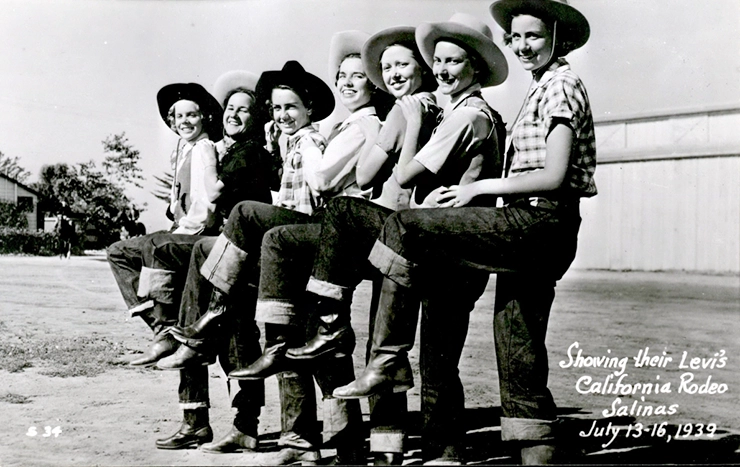Levi Strauss

Levi Strauss (born Löb Strauß, February 26, 1829 – September 26, 1902) was a pioneer of jeans and denim clothing, who popularized them, re-creating and improving their original look into the jeans we know today; as well as being the founder and owner of the “Levi Strauss & Co” (“Levi’s”) brand.

Early years and immigration
Levi Strauss’s story began with humble roots. In 1847, at the age of 18, he ventured to the United States in pursuit of the American Dream. Settling in San Francisco during the height of the California Gold Rush, Strauss quickly recognized the need for durable workwear that could withstand the rigors of manual labor.

Innovation with denim
The turning point in Levi Strauss’s career came in 1873 when he partnered with Jacob Davis, a tailor, to patent the first-ever riveted denim work pants. This marked the birth of the iconic blue jeans we know today. The copper rivets, strategically placed to reinforce stress points, transformed denim into a durable and enduring fabric, ideal for the demands of the labor-intensive industries of the time.

The birth of “Levi’s”
Levi’s jeans, initially known as “waist overalls,” gained popularity among miners, cowboys, and laborers due to their unparalleled strength and comfort. In 1873, the blue jeans received their distinctive lot number “501”, a designation that would become synonymous with Levi’s quality craftsmanship. The Levi’s brand was officially born, setting the stage for a global fashion phenomenon.

Two Horse trademark and patch
The depiction of two horses, each exerting force in opposing directions on the same pair of jeans, futilely attempting to rip them apart, was not the sole reason behind the adoption of the Two Horse logo. Recognizing that not all their consumers spoke English as their primary language and acknowledging that literacy levels varied, especially in remote Western regions, Levi chose a memorable image to cater to a diverse audience. This iconic image served as a guide for early consumers who could enter their local general store and request “those pants with the two horses,” ensuring they would receive a pair of Levi’s jeans. Interestingly, the product retained the name “The Two Horse Brand” until 1928 when the company officially embraced the Levi’s trademark.

Invention of jeans for women
In 1934, Levi introduced the first blue jeans for women. Before that it was considered not really popular and appropriate, so women had been borrowing their husband’s or brother’s jeans for years until they got a chance to have specifically women’s jeans models.

The first use of Red Tab
In 1936, to distinguish their products from competitors, “Levi’s” incorporated the Red Tab onto the right back pocket of the jeans, a placement that remains unchanged to this day.
An interesting fact is that the back tabs can be of the different color, each of which has their own meaning:
- red tab — signature blue jeans;
- orange tab — experimental models of their denim products;
- white tab — for for corduroy jackets and jeans, as well as for the women’s line;
- black tab — usually with gold lettering, and used for wrinkle-resistant jeans;
- silver tab — for grunge-inspired jeans in ’80s-‘90s

Legacy and enduring influence
Levi Strauss’s legacy extends far beyond the seams of a pair of jeans. His pioneering spirit and commitment to quality have left an indelible mark on the fashion industry. Today, Levi’s jeans remain a wardrobe staple, bridging generations and transcending trends.
Levi Strauss, who remained unmarried throughout his life, passed away in 1902 in San Francisco. At the time of his death, his estate was valued at around $30 million, equivalent to approximately $165 million today. Sigmund, Levi’s nephew, had a sole child named Elise, who went on to marry Walter A. Haas. Walter was the son of Abraham Haas, and their descendants are the present owners of Levi Strauss & Co.


